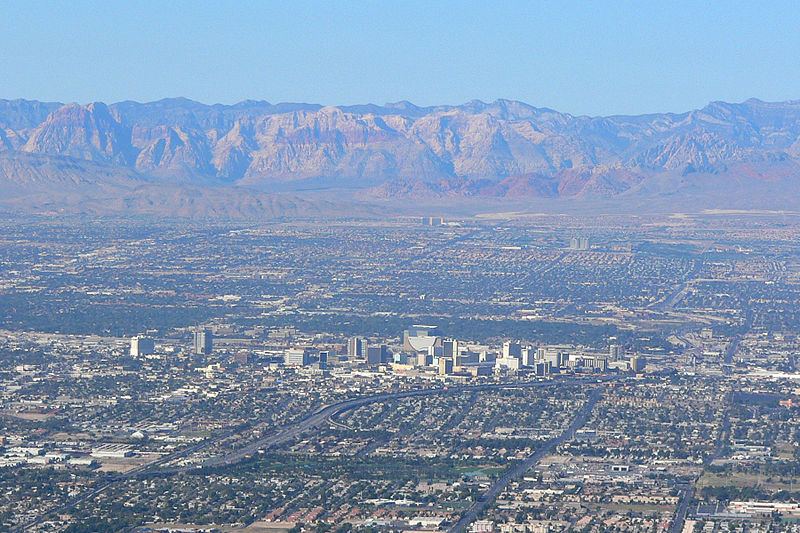Established in 1905, Las Vegas was incorporated as a city in 1911. At the close of the 20th century, Las Vegas was the most populous American city founded in that century (a distinction held by Chicago in the 19th century). There are numerous outdoor lighting displays on Fremont Street, as well as elsewhere in the city.
Las Vegas often refers to the city plus some areas beyond the city limits, especially the resort areas on and near the Las Vegas Strip, and sometimes the entire Las Vegas Valley. The 4.2 mi (6.8 km) stretch of South Las Vegas Boulevard known as the Strip is mainly in the unincorporated communities of Paradise, Winchester, and Enterprise.
Climate
Las Vegas' climate is a
subtropical desert climate (Köppen
climate classification BWh), typical
of the
Mojave Desert in which it lies. The city
enjoys abundant sunshine year-round: it has an
average of about 300 sunny days per year with
more than 3,800 hours of sunshine.
Las Vegas' winters are of short duration and the season is generally mild, with December, the coolest month, averaging 47.7 °F (8.7 °C). The mountains surrounding Las Vegas accumulate snow during the winter but snow is rare in the Las Vegas Valley itself. Although, on December 16, 2008, Las Vegas received 3.6 inches (9.1 cm). Temperatures reach the freezing mark on 7.5 nights of the year but rarely sink to 20 °F (−7 °C).
Annual precipitation in Las Vegas is about 4.2 in (110 mm), which on average occurs on 26–27 days per year. Most of the precipitation falls in the winter, but the wettest month (February) has on average only 4 days of precipitation.
